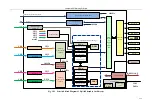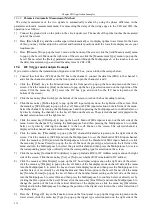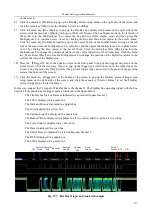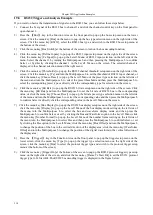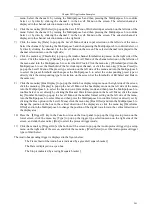
Chapter XIX Application Examples
240
key [Number Format] to pop up the Level3 Menu of the number format setting on the left side of the menu,
turn the Multipurpose b to select Hex and then press the Multipurpose b to confirm Select, or directly set by
clicking the Hex option in the Level3 Menu; click the menu key [Bus Offset] and turn the Multipurpose b to
change the position of the bus in the vertical direction of the display area; click the menu key [Waveforms
Offset] and turn the Multipurpose b to change the position of the digital waveform in the vertical direction of
the display area;
9)
Press the
【
Trigger
】
key in the Function Area on the front panel to pop up the trigger setup menu on the
lower screen, click the menu key [Type] to pop up the trigger type selection menu on the right side of the
screen, and click the menu key [Bus] to select the protocol trigger mode;
10) Click the menu key [Trigger On] at the bottom of the screen to pop up the SPI protocol trigger type setup
menu on the right side of the screen, and click the menu key [SS Valid] to set the SPI protocol trigger type to
SS Valid.
The SPI bus decoding trigger is displayed in the figure below:
The Frame Start of the SPI bus is indicated by a green left square bracket [.
The Data is displayed in a blue box.
The Stop is indicated by a red right square bracket ].
Start of
Frame
Data
End of
Frame
Fig. 19.9 SPI Trigger and Analysis Example
19.10 Audio Trigger and Analysis Example
If you want to observe the transmission of signals on the Audio bus, you can follow these steps below:
1)
Connect the clock line of the Audio bus to the channel 1, connect the Bit Select line to the channel 2, connect
the data line to the channel 3, and click the channel control key on the front panel to open the channels 1, 2
and 3;
2)
Press the
【
Bus
】
key in the Function Area on the front panel to pop up the bus setup menu on the lower
screen. Click the menu key [Bus] on the menu to pop up the bus type selection menu on the right side of the
screen. Click the menu key [Audio], select the Audio bus type, and switch to the Audio bus setup menu at the
bottom of the screen;
3)
Click the menu key [Bus Switch] at the bottom of the screen to turn on the bus decoding function;
4)
Click the menu key [Audio Type] to pop up the Level3 Menu of the Audio type selection on the left side of
the menu. Select the LJ by turning the Multipurpose b and then pressing the Multipurpose b to confirm Select,
or by directly clicking the LJ in the Level3 Menu on the screen. The selected channel is displayed in the
Audio type menu on the right side;
5)
Click the menu key [Bit Clock] to pop up the Level3 Menu of bit clock input selection on the left side of the
Summary of Contents for 4456 Series
Page 10: ...VIII...
Page 55: ...Chapter V Trigger System 45 Fig 5 51 RF Test Signal Example...
Page 69: ...Chapter VII Mathematical Operation 59 Fig 7 10 Advanced Math Example...
Page 71: ...Chapter VIII Display System 61 Fig 8 3 Wfm Palette Menu Fig 8 4 Normal Palette...
Page 72: ...Chapter VIII Display System 62 Fig 8 5 Inverted Palette Fig 8 6 Temperature Palette...
Page 75: ...Chapter VIII Display System 65 Fig 8 12 XY Display Example...
Page 165: ...Chapter XI Protocol Analyzer Option 155 Fig 11 242 1553 Trigger and Analysis Example...




